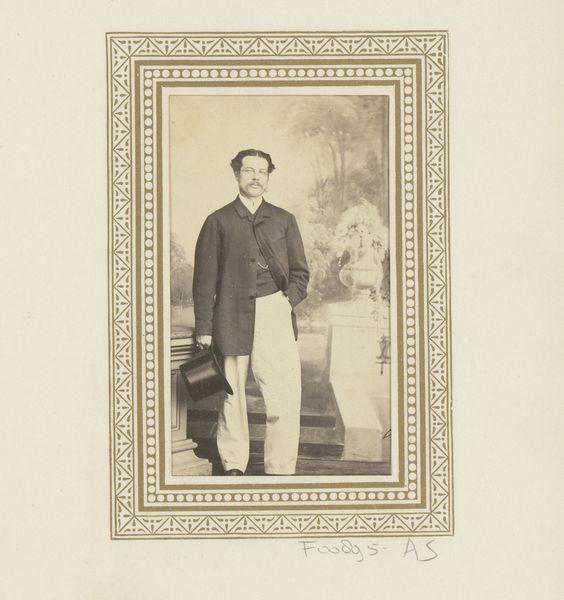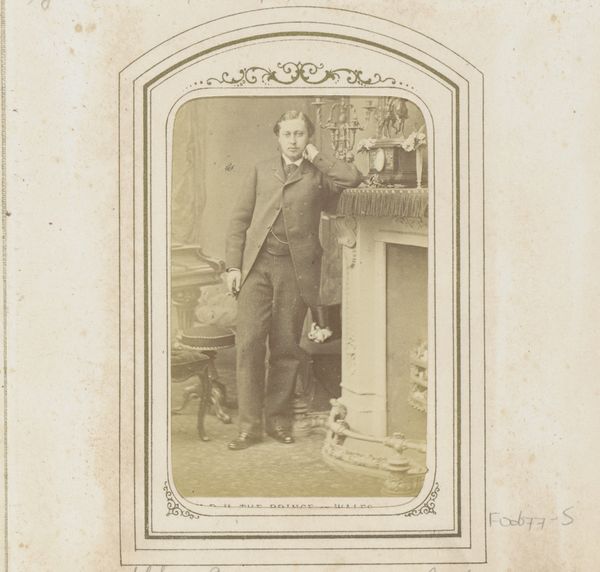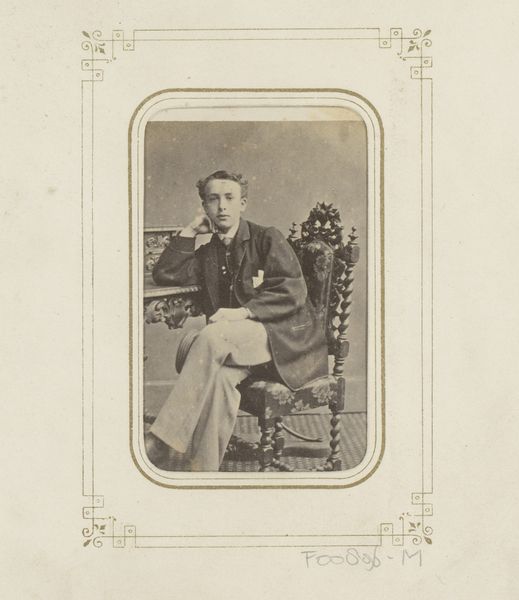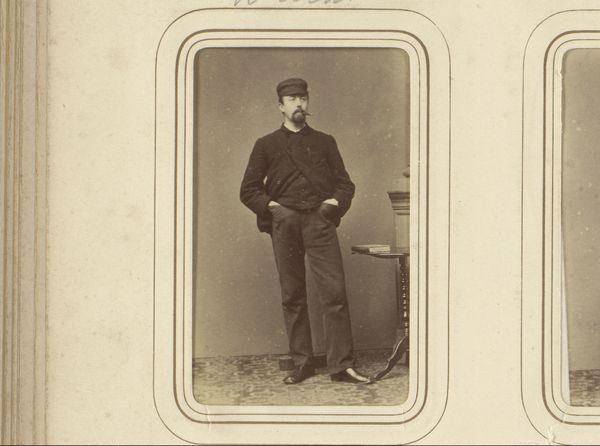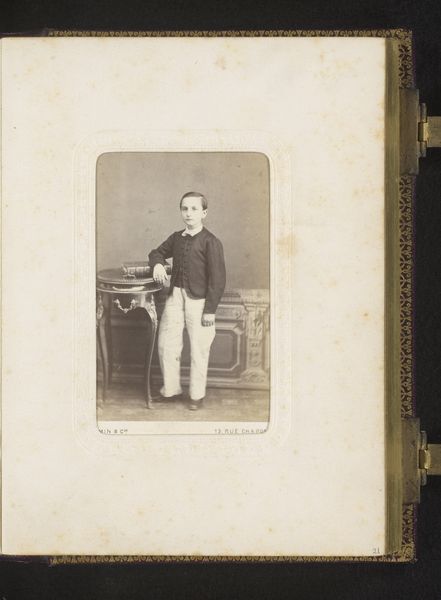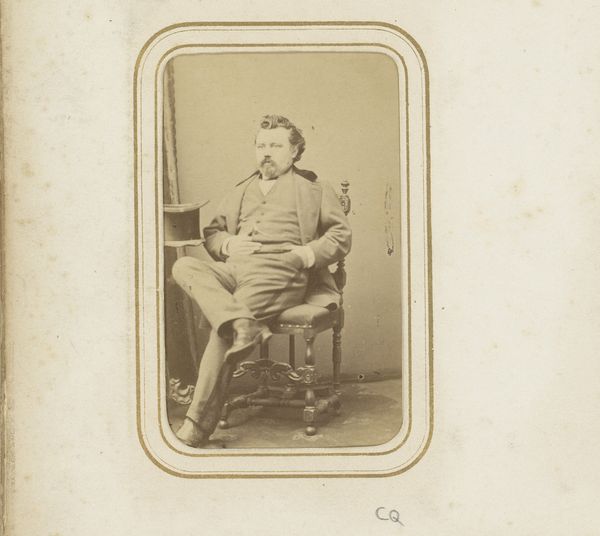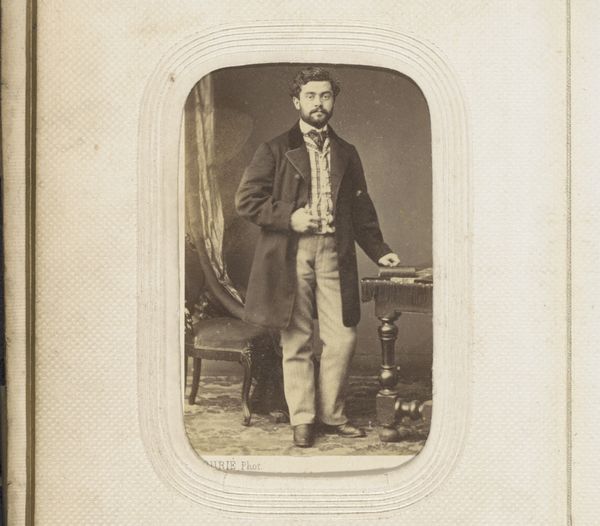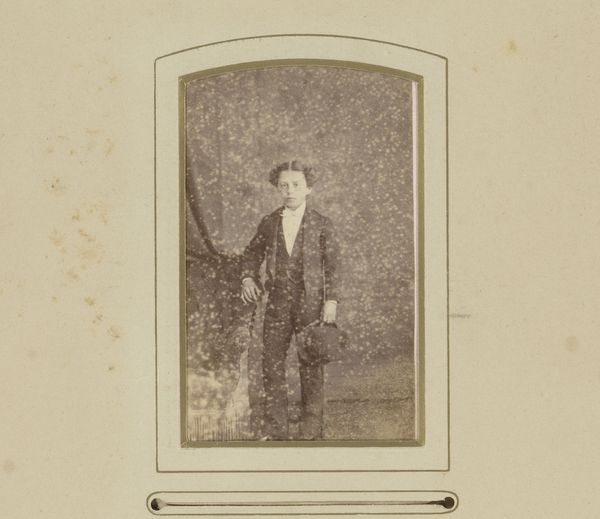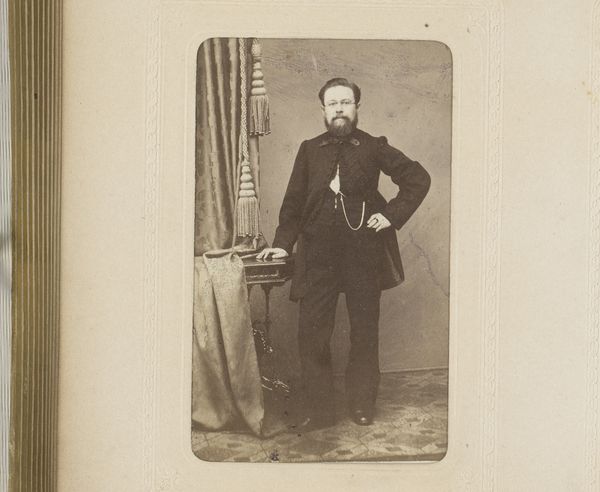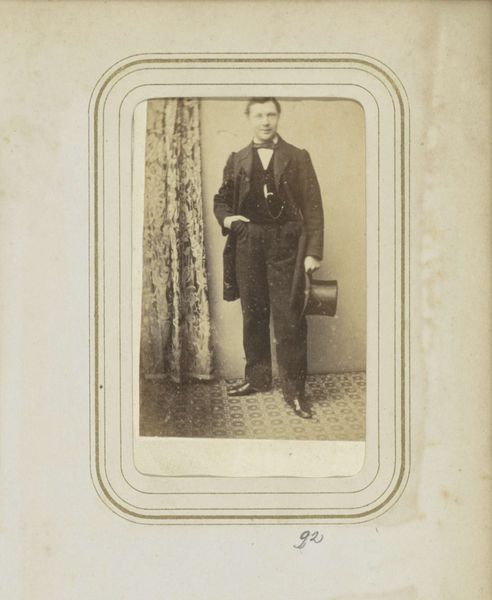
daguerreotype, photography
#
portrait
#
daguerreotype
#
photography
#
historical photography
#
genre-painting
Dimensions: height 85 mm, width 53 mm
Copyright: Rijks Museum: Open Domain
Curator: Welcome to the exhibition. Here we have an intriguing piece, a photograph titled "Portret van Willem van Oranje-Nassau, prins der Nederlanden." It’s a daguerreotype, placing its creation somewhere between 1865 and 1875, crafted by the hand of Henri Pronk. Editor: He certainly projects an air of relaxed authority. The casual crossing of his legs, the cane, the cigarette – it all speaks of a man comfortable in his position. Curator: Indeed. The daguerreotype process itself is fascinating. Each image is unique, made directly onto a silvered copper plate. Think about the time and skill needed for each exposure! The clothing materials too, must have demanded the best available craftsmanship. A velvet jacket, probably from expensive yarn…it tells of wealth and status expressed through textile production. Editor: Look closer at how he holds that cigarette. It's a loaded image. It speaks to a specific masculine performance, of power and control, even indulgence. Willem van Oranje-Nassau, framed by those swirling decorative elements, is deliberately presenting a carefully crafted image of himself. What’s most curious, really, is that Willem holds it, almost a symbolic link between status and addiction, visible power but a private burden, or potential health issue, nonetheless. Curator: An interesting observation! While that particular symbolism isn't overtly apparent to me, it raises an important question about photographic materials and their representation. It encourages us to think about what those decorative elements, framing this portrait, would have been constructed of. Plaster? Painted? Printed on? I find myself equally intrigued by how that ornate chair speaks volumes through material choices that further display class and taste. Editor: The tassels on the curtain backdrop add another layer. Tassels and drapes speak of theatre, ceremony, and what the House of Orange stands for; tradition and its trappings in the photographic frame. What about the absence of more familial symbols, though? No crown or royal jewelry, but still, a kingly vibe emanates from him. Curator: A keen observation about those traditions; in thinking about how this work may continue influencing viewers of portraiture through photography and printmaking, what processes allowed mass viewership versus solely a commissioned image? Perhaps it circulated among a specific societal group as part of a new consumer culture. I am fascinated by the idea of how we keep the knowledge about his social and societal influences visible. Editor: Seeing how different contexts of craftsmanship influence how and why it endures over decades helps clarify its lasting resonance for modern eyes, and brings some of his memory, context and power in focus. Curator: Precisely, each component plays a role, not just in portraying the man but in illustrating the economic and social structures of his time. Editor: A window to his soul perhaps, filtered through the conventions, trends and symbols of the age.
Comments
No comments
Be the first to comment and join the conversation on the ultimate creative platform.
